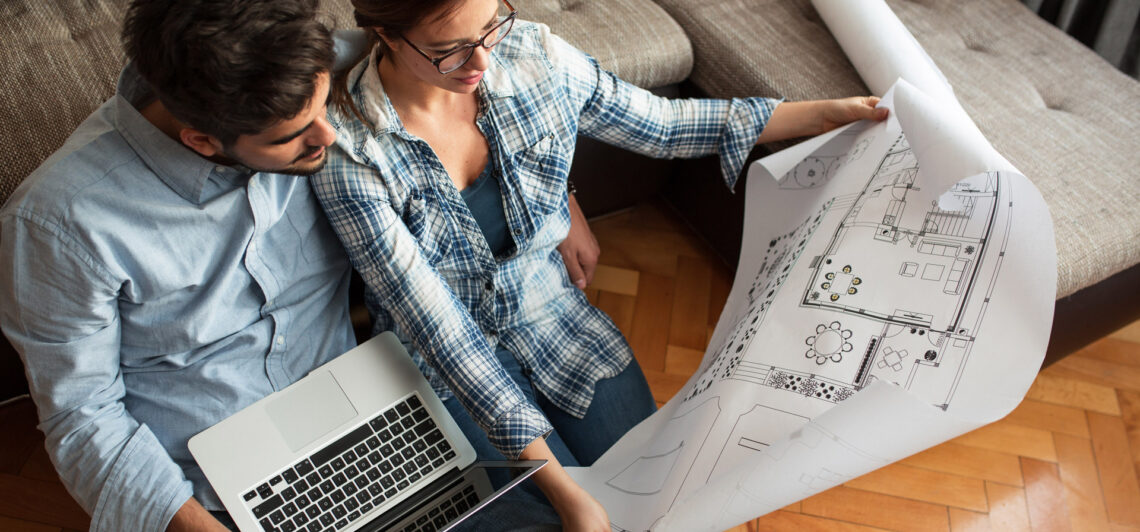
Designing a house is an exciting and deeply personal journey. It’s about translating your vision into a functional and aesthetically pleasing space that reflects your style, needs, and lifestyle. Whether you’re building from scratch or renovating an existing property, house design plays a crucial role in creating a space where you’ll feel comfortable, inspired, and at ease. From architectural layout to interior design, each detail can transform a house into a home.
In this article, we’ll delve into the elements of house design, explore popular trends, and provide helpful tips on how to design a home that fits your desires and enhances your quality of life.
1. The Basics of House Design: Understanding Your Needs
The first step in house design is understanding the requirements of the space. What are your priorities? Do you need more bedrooms, a home office, or an open-plan living area? Start by identifying the must-have features of your future home, considering both practical and aesthetic aspects.
Lifestyle Considerations
Think about how you and your family will live in the space. For example:
- Family Dynamics: If you have young children or older family members, consider designing spaces that allow for easy supervision, accessibility, and safety. Open floor plans might work better for family gatherings.
- Entertaining: If you love hosting parties or family gatherings, consider including larger dining areas, outdoor entertaining spaces, or a spacious kitchen island.
- Privacy and Personal Space: If you value personal space, think about creating private areas such as a master suite separate from the kids’ bedrooms or incorporating multiple bathrooms.
Functional Layout
Think about the flow of the house. Good design should make daily living easier, so consider how each room connects to others. A functional layout will enhance comfort and convenience, such as placing the kitchen near the dining area, or ensuring that bedrooms are in quieter areas of the house.
2. Key Elements of House Design
House design is more than just aesthetics. A successful design combines functionality, comfort, and style in a way that supports your needs. Here are some key elements to consider when designing your home:
Architectural Style
The architectural style you choose will set the tone for the entire house. Some popular architectural styles include:
- Modern: Characterized by clean lines, minimalism, and the use of contemporary materials like steel, glass, and concrete. Modern homes often feature open spaces and large windows that connect the interior with the exterior.
- Traditional: Traditional homes focus on classic elements, such as brick facades, symmetrical designs, and detailed ornamentation. These homes have a timeless, elegant appeal.
- Contemporary: While similar to modern, contemporary homes incorporate current design trends, often blending various styles, materials, and techniques to create a unique look.
- Farmhouse: A rustic yet functional design, farmhouse-style homes typically feature natural materials like wood and stone, along with wide-open porches and simple interiors.
- Industrial: Often associated with urban spaces, industrial homes use raw materials like exposed brick, steel beams, and large windows. These homes have a trendy, minimalist vibe.
Open Floor Plans vs. Defined Spaces
The decision between an open floor plan and defined rooms is crucial in house design. Open floor plans are popular in modern homes, creating a sense of space and enhancing flow between living, dining, and kitchen areas. However, some people prefer more defined spaces for added privacy or a cozier feel.
Consider your daily activities and how you move through the house when deciding between an open plan or a more traditional layout. For example, if you love cooking and socializing simultaneously, an open-plan kitchen with a large island can work well for both.
Zoning and Functionality
Design your home with distinct zones for different functions, such as living, working, and sleeping areas. This approach will help you maintain privacy and organization within the home. Key areas to zone include:
- Private Zones: Bedrooms, bathrooms, and personal spaces should be located away from busy areas like the kitchen and living room.
- Social Zones: The living room, kitchen, and dining areas should be centrally located to encourage family interaction and entertaining.
- Work Zones: If you work from home or need a study area, consider incorporating a dedicated workspace or home office, ideally in a quiet and separate section of the house.
3. Interior Design: Personalizing Your Space
Interior design is where you can truly showcase your personality and taste. The way you decorate and furnish your home plays a significant role in the overall atmosphere. From color schemes to furniture placement, here are some interior design tips to make your house feel uniquely yours:
Color Scheme and Mood
Colors have a powerful effect on the mood of a room. Choose colors that reflect the feelings and ambiance you want to create. For example:
- Warm Colors: Red, orange, and yellow are energizing and stimulating, perfect for spaces like kitchens or home offices.
- Cool Colors: Blue, green, and purple are calming and soothing, ideal for bedrooms and bathrooms.
- Neutral Colors: Shades of white, gray, beige, and brown create a timeless and versatile foundation, allowing other design elements to shine.
Furniture and Layout
When selecting furniture, think about both form and function. Choose pieces that fit the scale of your rooms and complement the design style. For example, a sectional sofa works well in an open-plan living space, while a more traditional sofa might be better suited to a formal living room.
Consider the layout and flow of furniture within each room. Aim for a layout that allows for easy movement and conversation. In larger rooms, create smaller zones for various activities, like reading or watching TV.
Lighting Design
Lighting is a critical element in interior design. Different lighting types—ambient, task, and accent—serve various purposes in different spaces. Consider a layered lighting approach that includes:
- Ambient Lighting: Overhead ceiling lights or chandeliers provide general illumination.
- Task Lighting: Focused lighting, such as reading lamps or pendant lights over the kitchen island, helps with specific tasks.
- Accent Lighting: Decorative lighting like wall sconces or LED strips can add warmth and ambiance to the room.
Natural light is equally important in house design. Maximize natural light by placing windows strategically and choosing light, reflective materials. Large windows or glass doors can help bring the outdoors inside.
4. Sustainability in House Design
Sustainability is becoming an increasingly important consideration in house design. Incorporating energy-efficient and environmentally friendly elements not only reduces your carbon footprint but can also save you money in the long run. Here are some ways to make your house more sustainable:
Passive Design
Passive design involves using natural elements to heat and cool your home. This can include designing your home to take advantage of natural sunlight for passive heating or installing large overhangs to block excessive sunlight during the summer.
Energy-Efficient Systems
Consider integrating energy-efficient heating, cooling, and lighting systems. Options like solar panels, energy-efficient appliances, and LED lighting can help reduce energy consumption.
Eco-Friendly Materials
Sustainable materials like bamboo, recycled glass, and reclaimed wood are not only eco-friendly but also add a unique touch to your home. These materials are durable and often require less energy to produce, making them an excellent choice for green design.
5. Outdoor Design: Extending Your Living Space
The design of your home should extend to the outdoors, creating a cohesive and inviting atmosphere. Whether you have a sprawling backyard or a small balcony, consider how you can enhance your outdoor spaces.
Outdoor Living Areas
Decks, patios, and outdoor kitchens are great additions to your home’s design. They allow for relaxation and entertainment in an outdoor setting. Consider incorporating seating, fire pits, or even a pool to elevate your outdoor living experience.
Landscaping and Curb Appeal
Landscaping plays a key role in your home’s first impression. Choose plants that complement your home’s exterior and climate, and design pathways, gardens, and lawns to add visual appeal. Don’t forget about the entryway—this is often the first thing visitors will see, so make it welcoming with thoughtful design elements like lighting, planters, and door hardware.
Conclusion: A House Designed for You
House design is an opportunity to create a living space that reflects your personality, values, and lifestyle. By considering key elements like layout, architectural style, interior design, and sustainability, you can design a home that feels uniquely yours. Thoughtful planning and attention to detail ensure that your home is not only functional but also beautiful, comfortable, and in harmony with your everyday life.
Whether you’re starting from scratch or renovating an existing home, the design process should be approached with care and creativity. By focusing on the things that matter most to you, you’ll create a space that truly feels like home.
